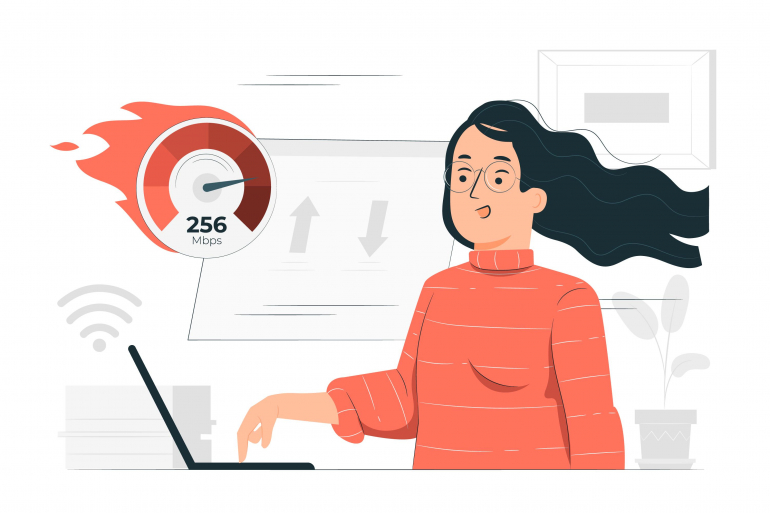How to Increase Your Site Speed

An increasing number of studies show that when a user has to wait more than 3 seconds for a web page to load, most of them will move on. Users don't leave their screens unattended for more than 3 seconds, so if a web page takes too long to load, they will close it and not come back.
A study by Google found that 40% of visitors will leave immediately if your site loads slower than 10 seconds, while 60% would leave if your site loads slower than 5 seconds. It means that people will likely find other sites with faster load times and won't return or click on your ads. In addition, you'll also lose the trust you've already built with them since they'll think you're unreliable and make an assumption that the mobile version may be just as.
It is why it's become increasingly important for SEO agencies who offer website design services to improve their clients' page speed. Let's visit some ways they can do so.
Remove Unused Java and CSS
With the help of Google Chrome DevTools, one can find unused scripts and styles. And then, we can remove them.
You can check for unused scripts by right-clicking on any script tag and selecting "Inspect Element." Then, use the "Scripts" tab to see what is being loaded on the page. A good web developer can find what is loaded because they will cross-reference it with the HTML markup.
Compress the File Size of Images
Compressing images is a good practice for improving web page speed.
The larger an image size, which is measured in kilobytes, the slower it will load on a web page. Image compression reduces the size of an image by removing redundant data. It will speed up load times and reduce bandwidth usage on your website.
There are many programs available that allow you to compress images with ease. Some popular options include Photoshop, GIMP, and Web Developer Toolkit (WDT).
Host Images on a CDN
Hosting images on a CDN means that the images will be stored on a server closer to the user. It results in much faster loading times. It also reduces bandwidth and storage costs for the company. The company can use this extra bandwidth to host videos or other types of media that might require more space than just images.
It is important to note that not all CDNs are created equal, and some are better than others in terms of speed, security, and cost.
Used Good Hosting
Many hosting providers are available in the market, and selecting the right one is a difficult task. However, not all hosting providers are created equal, and you need to know where to look for the features that will help you improve your site's speed.
There are two types of website hosting providers: shared hosting and virtual private servers. Shared hosting is perfect for small websites with little or no traffic, but when your website starts getting more traffic, it's time to switch to a Virtual Private Server (VPS) host.
Choosing a reputable host can be hard because many fake hosts out there offer great deals on their services. The most sure-fire way of ensuring that it is a trusted host is by reading reviews by previous customers on the web.
Limit the Number of Redirects
Site speed is a crucial factor for your users as it affects the time it takes for them to find what they are looking for on your site. Redirects have been known to significantly slow download times and increase the risk of 404 errors.
Redirects essentially take a page from a user's path and send them somewhere else. That means many pages would be sent from the homepage to another place, slowing down the loading time. It can be done without redirecting pages using server-side code that is configured with custom URL rewriting rules.
Limit the Number of Requests
The more requests you have on your website, the longer it will take for your site to load. This is because every request involves additional work by the browser, server, and database.
If you want to keep your website loading fast, then limit the number of requests coming in at a time. You can do this by determining how many items are shown in your navigation menu or by restricting the number of pages on your home page.
You can also limit what types of content are allowed to be requested from your website with no limit on the number of times they are displayed. This way, you make sure that you only have one request at a time since each item in navigation menus, home page pages, and widget pages all have their unique URL, which means they each have their own load time.
Use JavaScript Sparingly
JavaScript is a programming language that powers modern web browsers. It is used to create interactive animations, effects, and transitions within web pages. But it can also be used for security purposes.
JavaScript slows down your website and makes it difficult for people to use. If you want to prevent this from happening, you can disable JavaScript on your website and use an alternative such as HTML5 instead.
Avoid using too much JavaScript on your website because it adversely affects your site's performance and increases the loading time of your site.
Gain a Fast Website Today
Website design is a delicate topic that requires lots of thought, planning, and effort. If you adopt and follow all of the tips in this article, you will walk away with a great website.
A lot of these tips will be over the everyday user's head, but not for a seasoned web developer. If you aren't an experienced web developer or don't have one yet, we suggest finding one. They will have the best chance of implementing all of these tips.
Copyright © . All Rights Reserved